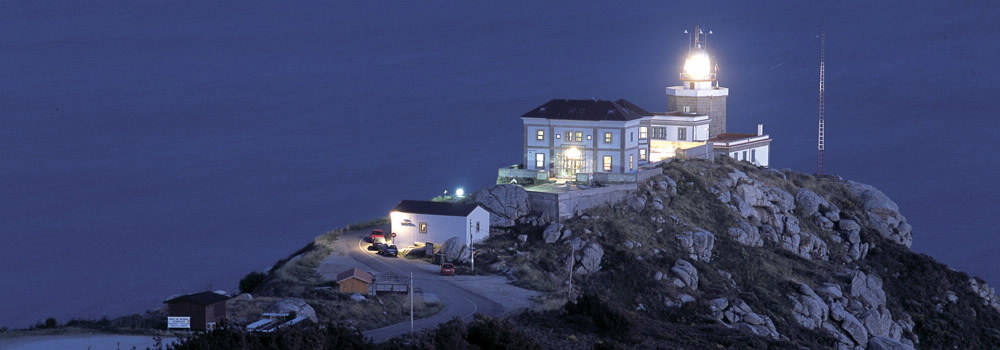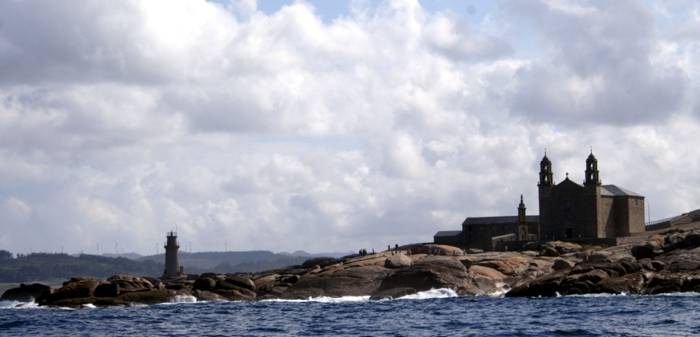 |
GALICIA
Tower of Hercules
This 2000 years old Roman wonder, modeled after the Lighthouse of Alexandria, is the oldest lighthouse that is still in active, and the second tallest in Spain. The name honours the three days fight of Hercules and the giant Geryion, in a legend that is from Celtic origins. Hercules buried the giant’s body in the place where the lighthouse stands and orderer to build a city, Brigantium, which is why the lightouse was mostly known as farum Brigantinum (the lighthouse of Brigantium.) The city today called La Coruña, “Balcony of the Atlantic” has the Tower of Hercules represented in its coat of arms.
 |
| Tower of Hercules, near the city of La Coruña |
Where to stay: http://www.casaperfeutomaria.com/
Finisterra
 |
| Lighthouse in Cape of Finisterre |
 |
| The End of the World |
Nuestra Señora de la Barca
Next to this lighthouse, surrounded by the seas of Costa da Morte (in Galician, “Coast of Death”), stands the sanctuary of Nuestra Señora de la Barca (our Lady of the Boat). It’s uncertain the date, probably built around the 11th or 12th century.
| A church made of rock and sea |
Carnota
This beautiful environment harbors the village of Carnota, surrounded by ancient mounds and celtic forts.
Draws attention the largest hórreo in Spain -a traditional form of granary in the peninsular northwest; and the beach of Carnota, the longest in Galicia.
Where to stay: http://www.sancibranrural.com
Cedeira
The lighthouse of Punta Candelaria watches over the coasts of Cedeira, a traditional settlement of parishes like Cedeira, San Andrés de Teixido or Régoa. Along with the fishing, the livestock becomes more visible due semiferal horses ruminating on the steep landscapes of the coast, confirming a very characteristic sight along with its beautiful beaches.
 |
| Sea and horses, a common sight in Cedeira |
 |
| Village of Cedeira |
Where to stay: http://www.apasada.com/
Cabo Prior, Ferrol
A good time to check Ferrol, a beautiful town that witnesses population remains from prehistoric times to Celts, Phoenicians, Greeks, Roman and many other visitors, and one of the traditional leading harbour of the Spanish north seas.
 |
| Castle of San Felipe |
 |
| Night in Ferrol |
http://pousadadomar.blogspot.com.es/












.JPG)






No comments:
Post a Comment